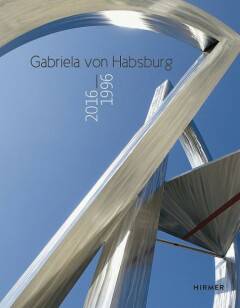
- Afhalen na 1 uur in een winkel met voorraad
- Gratis thuislevering in België vanaf € 30
- Ruim aanbod met 7 miljoen producten
- Afhalen na 1 uur in een winkel met voorraad
- Gratis thuislevering in België vanaf € 30
- Ruim aanbod met 7 miljoen producten
Zoeken
Omschrijving
Gabriela von Habsburg has created a diverse body of sculptural works, which can be seen throughout Europe and the United States, including a 1990 sculpture at the National Academy of Science in Washington, DC. Although her works address a wide range of themes, she is perhaps best known for two works that reflect her time living and working in the Republic of Georgia and, later, as Georgia's ambassador to Germany in Berlin. Both political and poetical, the sculptures in stainless steel and stone-printed lithography take as their subject events in the country's turbulent recent history. For example, in the Rose Revolution Monument in Tbilisi and a second large monument in Sopron, von Habsburg pays homage to the wave of revolutions that followed the fall of the Iron Curtain.
The first book to assemble a representative survey of works from throughout von Habsburg's career, Gabriela von Habsburg includes one hundred color illustrations, including photographs of the artist at work, and contributions by art historians and curators Manfred Schneckenburger and Dieter Ronte, who discuss the politicization of aesthetics and, more specifically, the ways in which von Habsburg's work functions as a powerful form of political expression.
The first book to assemble a representative survey of works from throughout von Habsburg's career, Gabriela von Habsburg includes one hundred color illustrations, including photographs of the artist at work, and contributions by art historians and curators Manfred Schneckenburger and Dieter Ronte, who discuss the politicization of aesthetics and, more specifically, the ways in which von Habsburg's work functions as a powerful form of political expression.
Specificaties
Betrokkenen
- Auteur(s):
- Uitgeverij:
Inhoud
- Aantal bladzijden:
- 240
- Taal:
- Engels
Eigenschappen
- Productcode (EAN):
- 9783777426174
- Verschijningsdatum:
- 15/09/2016
- Uitvoering:
- Hardcover
- Formaat:
- Genaaid
- Afmetingen:
- 251 mm x 318 mm
- Gewicht:
- 1973 g

Alleen bij Standaard Boekhandel
+ 19 punten op je klantenkaart van Standaard Boekhandel
Beoordelingen
We publiceren alleen reviews die voldoen aan de voorwaarden voor reviews. Bekijk onze voorwaarden voor reviews.











